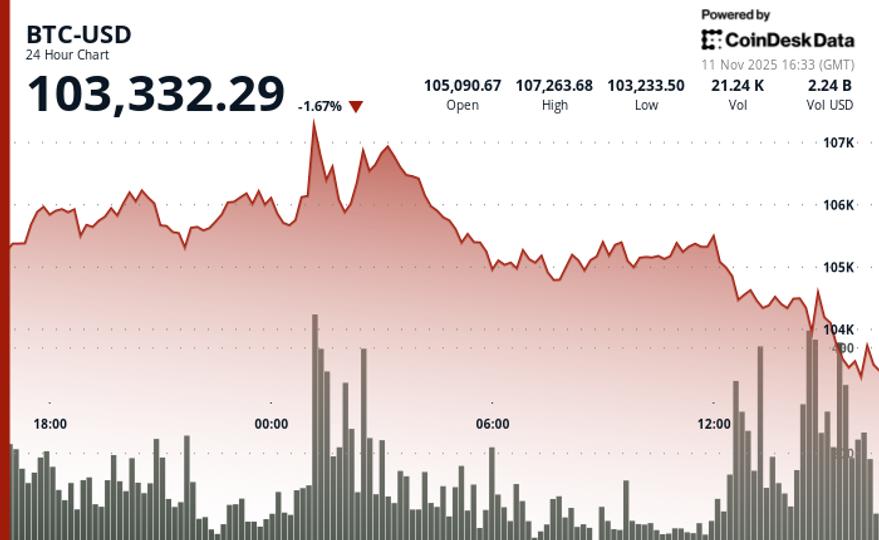Monday’s rebound in crypto markets quickly faded on Tuesday with bitcoin falling back below $104,000.
After briefly surpassing $107,000 overnight, the largest cryptocurrency fell to $103,200 in the morning hours in the United States. The drop erased gains generated by President Donald Trump’s “tariff dividend” plan and growing optimism that the U.S. government shutdown would end.
Ethereum Ether fell 1.2% to below $3,500 and large-cap altcoins such as Solana’s SOL , And fell 3-4%, marking a broad decline across digital assets.
Selling extended to crypto-related stocks, particularly among Bitcoin miners positioned as infrastructure players in the artificial intelligence (AI) boom. CleanSpark (CLSK) fell 8%, Hut 8 (HUT) fell almost 9% and Core Scientific (CORZ) fell 11.5% in early trading. TeraWulf (WULF) and Bitdeer (BTDR) also saw double-digit declines.
The sector-wide weakness stems from a slate of companies reporting weaker-than-expected earnings and growth prospects, a sign that the red-hot AI infrastructure trade, driven by lofty expectations of demand for increased computing capacity, is due for a correction.
Cloud computing provider CoreWeave lowered its outlook for the next quarter, citing delays in data center development, sending its stock down 15% to the weakest level since early September. TeraWulf reported weak profits and BitDeer reported larger-than-expected losses and delays in its next-generation ASIC chips.
Compounding the negative headlines, Japanese investment bank SoftBank sold its entire $5.8 billion stake in chipmaking giant and AI bellwether Nvidia (NVDA), sending shares of the world’s most valuable company down 3.5%. The tech-heavy Nasdaq index fell 0.7%, while the S&P 500 lost 0.3%.
Also this morning, ADP reported that U.S. private employers cut an average of 11,250 jobs per week in the four weeks ending Oct. 25, a sign of a deteriorating job market.
The CME FedWatch tool now puts the likelihood of an interest rate cut at the Federal Reserve’s December meeting at around 67%, while Polymarket sees it slightly higher, at 72%.
With Tuesday’s fall, BTC has now filled the so-called CME gap formed over the weekend. The gap occurs when Bitcoin futures traded on the CME, the preferred market for U.S. institutions, open higher or lower than the previous session’s close.
BTC revisiting these price gaps is often visible in market behavior, although not all gaps are necessarily closed, noted James Van Straten, principal analyst at CoinDesk.
While general sentiment in crypto markets has improved in recent days as BTC and ETH have rebounded from their lows, traders are using the rebound as an opportunity to take profits across the board, Jasper De Maere, a strategist in the OTC desk at trading firm Wintermute, wrote in a Tuesday note.
“When it comes to alternative assets, the theme remains profit-taking, leading to short-term outperformance,” he said. “A consensus is emerging that the majors must first go higher.”




